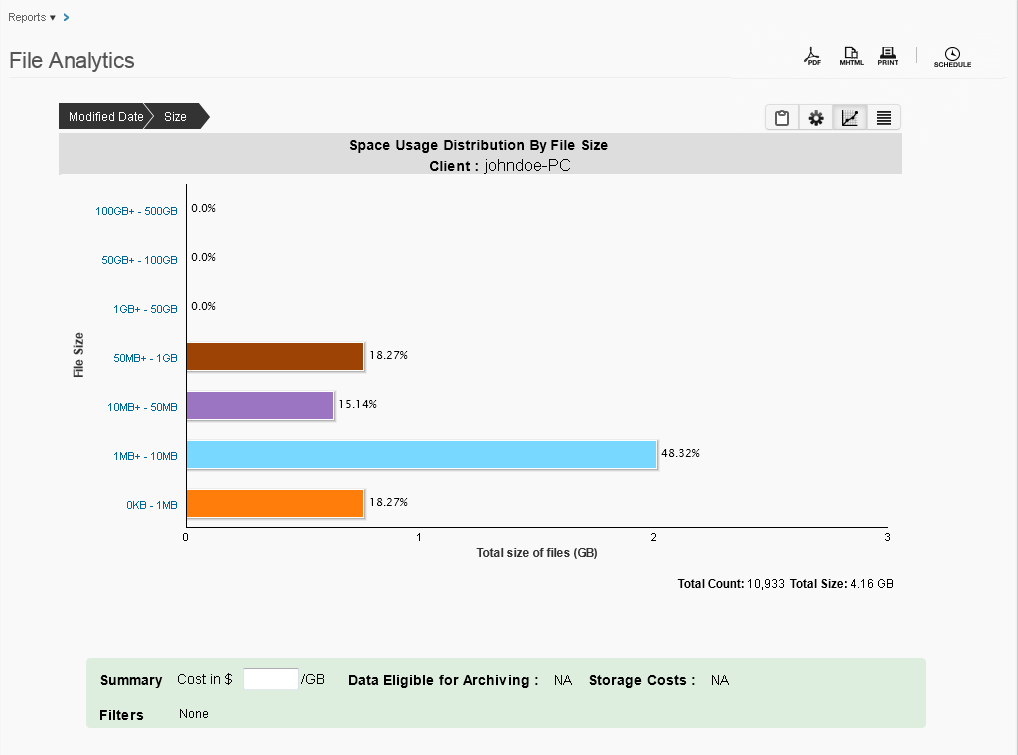Data Analytics allows you to view statistical information about unstructured data, such as files and emails, in your CommCell environment. With this information, you can quickly assess the state of your big data sources, take actionable steps to retrieve valuable storage space, and mitigate the risk of compliance-related issues.
Managing Big Data
Companies today generate a lot of data files. These files are created by multiple sources and exist in various locations across a company's storage infrastructure. Most of these files contain unstructured data in the form of emails, documents, and digital media. Unlike structured data, which reside in organized databases, unstructured data files are notoriously difficult to manage. Often, the amount of unstructured data created within a company can put a strain on storage resources. In fact, this exponential growth of unstructured data common to many corporate environments has been given a name: "big data."
From a storage-resource perspective, managing big data means locating and removing files that are:
-
Duplicated
-
Obsolete
-
Nonessential
It takes an enormous amount of time and energy to search through each storage location for data that should be archived or deleted. But ignoring the growth of big data allows files to consume valuable and limited storage resources. And, from a compliance perspective, risk increases when confidential or other sensitive files are disseminated throughout an organization because a proper solution is not in place.
Key Features
Some examples of how the information provided by Data Analytics can help you manage big data include:
-
Locating older files or emails that can be moved to less expensive archival storage
-
Identifying and deleting extra copies of large files and databases
-
Removing unauthorized file types (such as multimedia and personal photos)
-
Deleting outdated emails to reduce compliance risk
You must log in to the Web Console to access this report.

To get started, see Configuring Data Analytics.